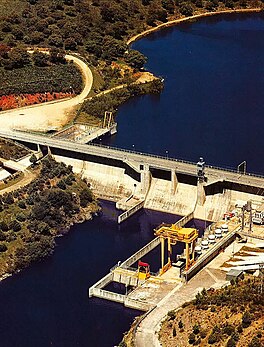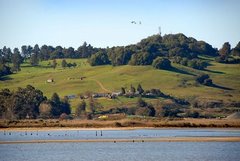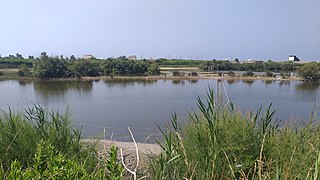| Arrocampo Reservoir | |
|---|---|
 Arrocampo reservoir dam | |
| Location | Almaraz, Romangordo, Saucedilla, Serrejón, Spain |
| Coordinates | 39°49′N05°42′W / 39.817°N 5.700°W |
| Type | reservoir |
| Native name | Embalse de Arrocampo (Spanish) |
| Managing agency | Iberdrola, Endesa |
| Built | 1976 |
| Surface area | 776 ha (1,920 acres) |
(This article is a summary translation of Spanish article Embalse de Arrocampo of Wikipedia (es))
Contents
- The Arrocampo reservoir as system to refrigerate the Almaraz Nuclear Plant
- The Arrocampo reservoir as a wetland
- Gallery
- The Arrocampo reservoir as a Special Protection Area (SPA) for wild birds
- The Arrocampo ornithologic park (Saucedilla)
- References
- Bibliography
- External links
The Arrocampo Reservoir, [1] (embalse de Arrocampo or embalse de Arrocampo-Almaraz in Spanish), is located in the province of Cáceres, Extremadura, Spain.
It was created at 1976 to refrigerate the turbines of the Almaraz Nuclear Power Plant. The nearest municipalities are Almaraz, Romangordo, Saucedilla and Serrejón. The dam is on the Arrocampo River (arroyo Arrocampo), very close to where this little river joins the Tagus.






























